People
‘History Is Dictated by Where You Stand’: Nathaniel Mary Quinn on Using His Neighbors as Subjects for Heartrending New Portraits
Quinn’s newest exhibition “The Land” is on view now at Salon 94.
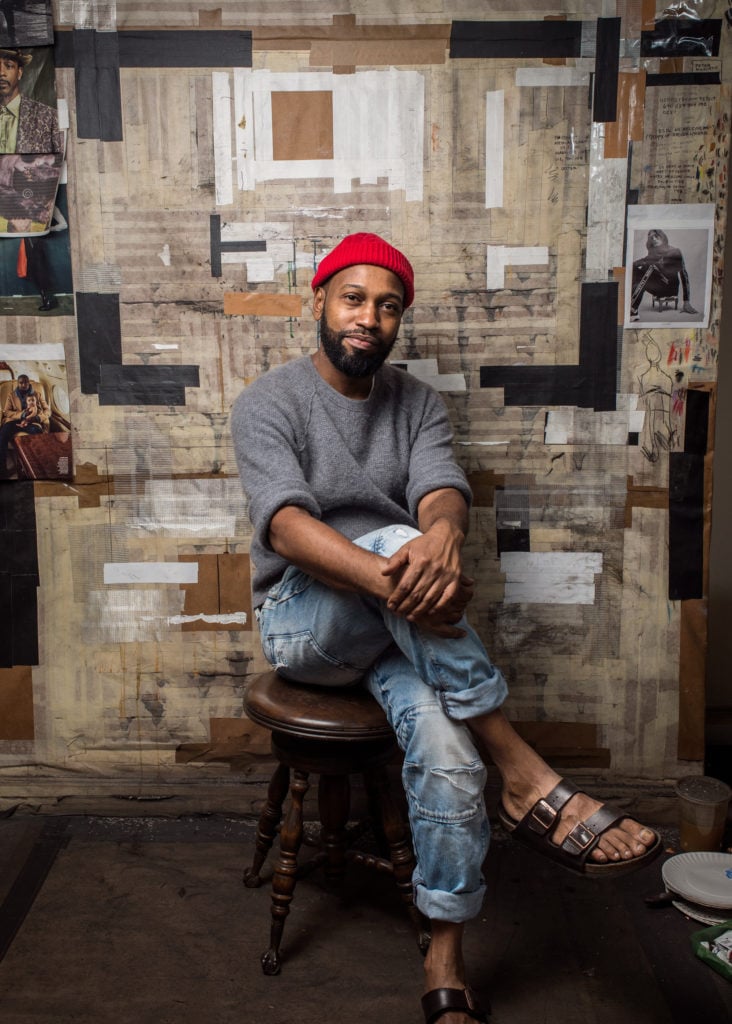
Quinn’s newest exhibition “The Land” is on view now at Salon 94.

Taylor Dafoe

Earlier this year, Nathaniel Mary Quinn wrote a powerful essay in Vogue about his childhood and the tragic experiences that shaped him. He described growing up in the Chicago projects, trading drawings for protection, about leaving for boarding school on scholarship a month before his mom unexpectedly died in the night, and about returning for Thanksgiving later that year to find that his father and four brothers had left without a word, abandoning him. He hasn’t seen them since.
The essay put his painted portraits into new perspective. Cobbled together both from personal memory and found images—a mouth from a magazine editorial, say, or a nose from a newspaper ad—his works might seem like riffs on Dadaist collage, rigorous and referential. But in light of his personal story they suddenly seemed like something else altogether: a feverish attempt to reconstruct the people that had gone away forever.
The portraits in Quinn’s new two-part exhibition “The Land,” on view at Salon 94’s two downtown New York galleries, are in fact based on people he knows—and who could be going away. The show was inspired by Crown Heights, Brooklyn, the neighborhood where Quinn lives in and works. An area once rocked by race riots, today it’s the site of another socio-political conflict: gentrification.
Quinn memorializes his subjects, who are based on people in his community, as mythic characters reckoning with the context changing around them. For instance, there’s the “Mayor of St. Marks,” a young man who lives with his mom and sister down the street. His portrait, a charcoal, gouache, and pastel work on paper, is particularly jumbled. There’s also “Kurt the Flirt,” “Old Man Slick,” and “America’s Next Top Model.”
Quinn, who is 41, moved to New York in the early 2000s to attend New York University, where he received his MFA. He went on to teach at-risk youth while, at night, he painted in the second bedroom of the apartment he shared with his now wife. Today, they own a two-family building where Quinn works in a paint-splattered space lined with grids of tape. The source material for his paintings—fashion ads, art books, pictures printed from the various corners of the internet—are taped up in clusters throughout.
On a rainy day in August, artnet News visited Quinn in his Crown Heights home and studio, just as he packed up the last of the works that would make up “The Land.”
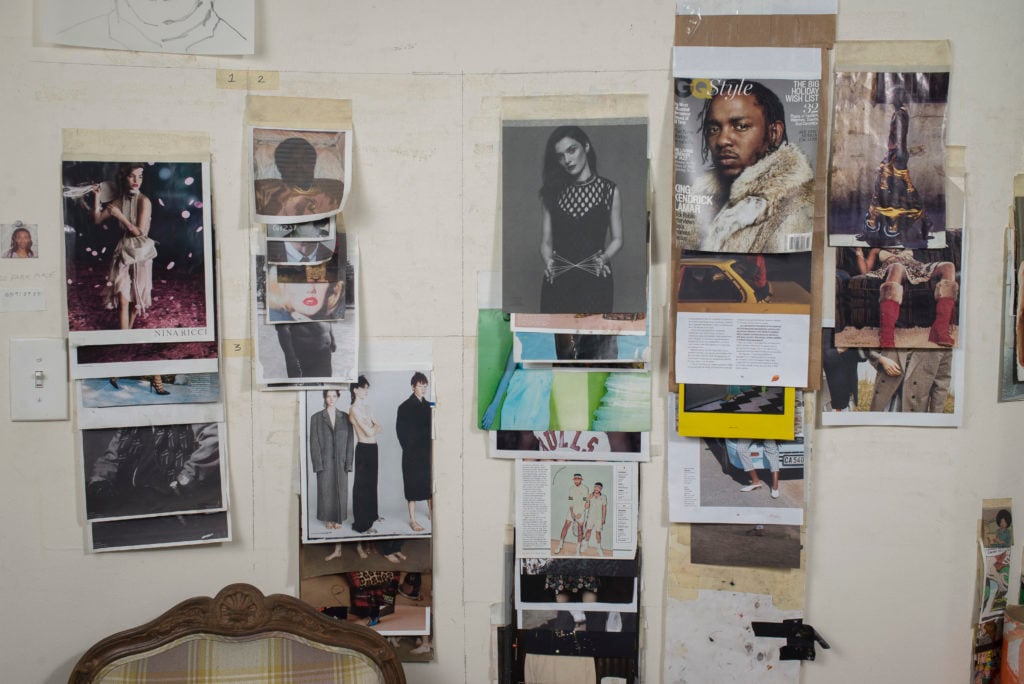
A wall in Nathaniel Mary Quinn’s studio. Photo: Taylor Dafoe.
Looking at your studio walls, there are clippings from a variety of places. Where do you source your imagery? Do you seek out certain looks or collect images as you come across them?
I source my imagery mostly from magazines, Google images and—on occasion—from Instagram. I tend to seek out looks that are befitting for my ideas and visions. Collecting images that immediately resonate with me also plays a major role.
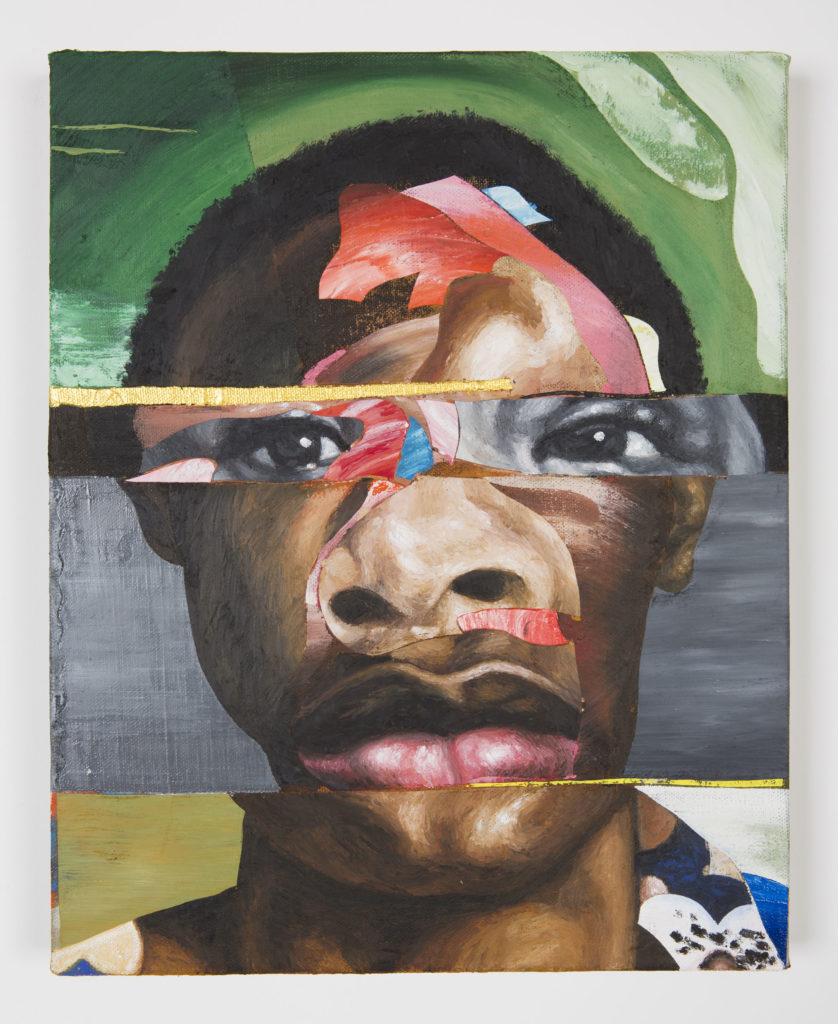
Nathaniel Mary Quinn, The Borrower (2018). Courtesy of Salon 94.
You mentioned that you don’t think about race, ethnicity, or other markers of identity when you compose your portraits. Can you explain what you mean by that?
While creating my work, I tend to only think about form, composition, color, and balance. I’m also consumed with worry about the outcome of the works. I never feel that ideas about race or ethnicity are at the forefront of my mind when I compose my portraits and figures, my paintings and works on paper. In many respects, I’m not even thinking when I compose my portraits; I’m feeling. This allows for the exploration of the human spectrum, the colorful rainbow of identity—the possibilities, the freedom, the liberty, the pursuit of greatness.
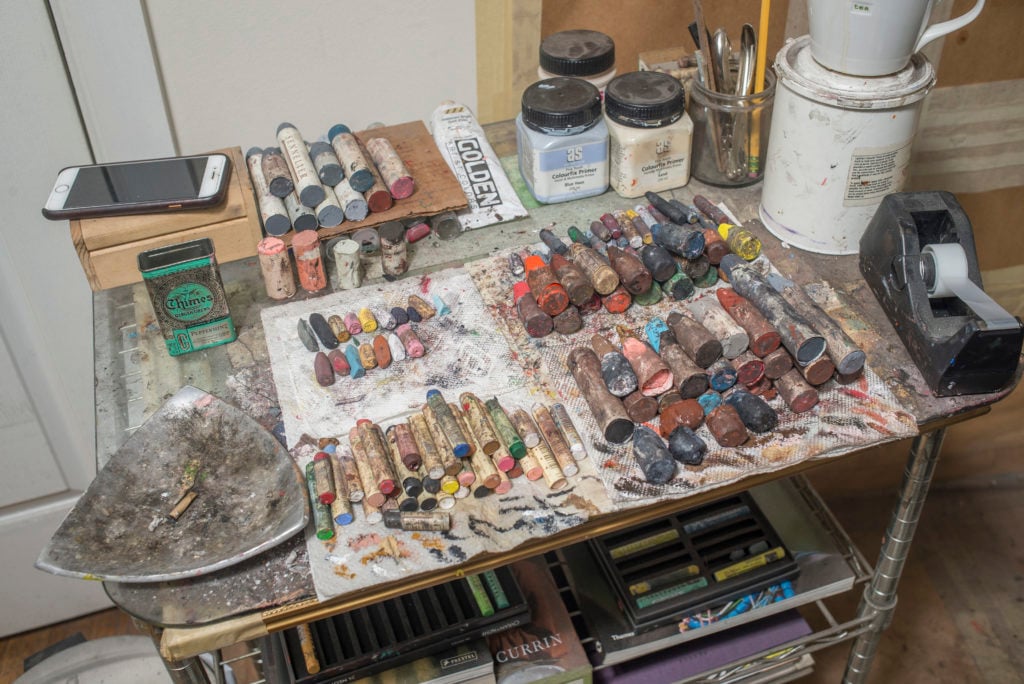
You’ve been in this neighborhood—Crown Heights—for a couple of years now. It’s an area with a particularly complex history. How has it informed your work?
My wife and I have lived in Crown Heights for about two and a half years now. We are new home owners. It’s a two-family home—my studio is on the parlor floor and we live upstairs. Certainly, the residents this neighborhood have informed my practice, so much so that I was compelled to make a body of work about them. The history is rich, complex, and vastly different from that of my childhood neighborhood in Chicago. Yet, at the same time, there are many similarities—mostly in the arena of collective ideologies. My neighbor shared with me that, during the 1960s, the neighborhood was mostly white. Then black families moved in. Now, with the advent of gentrification and Crown Heights being the new frontier, the neighborhood is surely swinging to white families and neighbors again. History is very much dictated by where you stand. For me, this is a huge shift. For my neighbor, someone who has lived here for about 55 years, it’s just life: “Just change, that’s all. Nothing new. I’ve seen it before.”
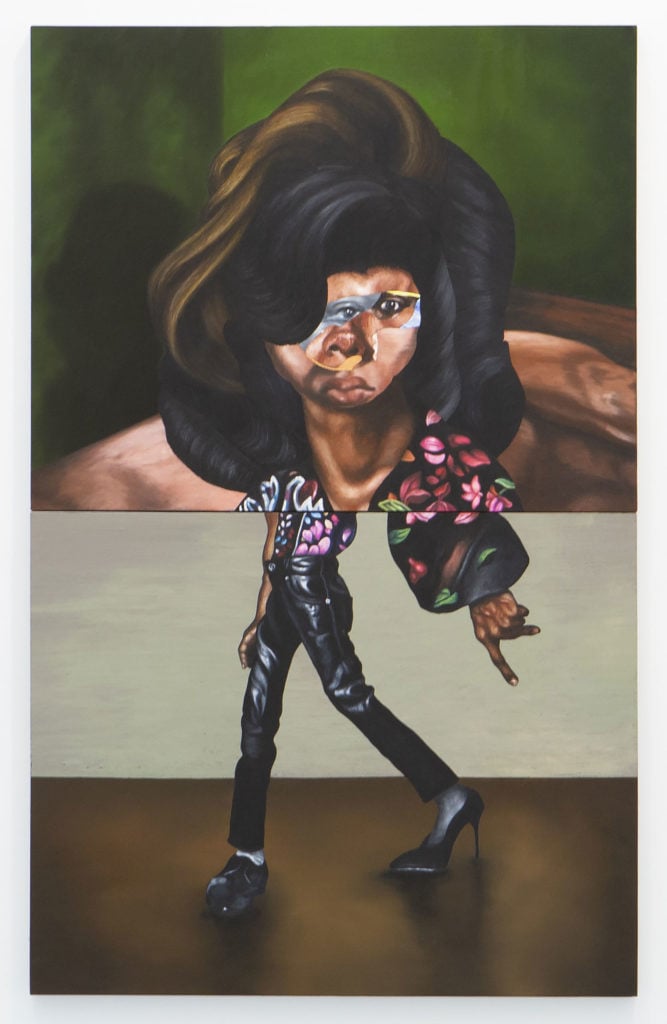
Nathaniel Mary Quinn, America’s Next Top Model (2018). Courtesy of Salon 94.
The works in the show are named after the characters that appear in them—“Night Model,” for instance, and the “Mayor of St. Marks.” Who are these characters to you?
I’ll give you an example. “America’s Next Top Model,” the largest painting in the entire show, is about one of my neighbors. She aspires to be a model and was a contestant on Project Runway. Before learning of her ambitions, she, her boyfriend, and I would speak quite often. They both have lovely dispositions, are devoted Christians, and are just overwhelmingly kind and highly approachable, which is somewhat unusual in my community. One evening she shared with me her connection to a guy who happens to be long-time friends with my wife—a gentleman who, like my wife, comes from London. He’s a successful actor and works in the world of entertainment and television, where he discovers and positions prospective contestants for various competitive television shows, like Project Runway. I was genuinely shocked to learn of this news; I would have been far less surprised if I had met an aspiring professional model in Chelsea or Tribeca, but perhaps that speaks to my own sense of prejudice. When I saw her again, I asked about the results of the competition. She hadn’t won, but she maintained her fighting spirit in pursuit of her dreams.
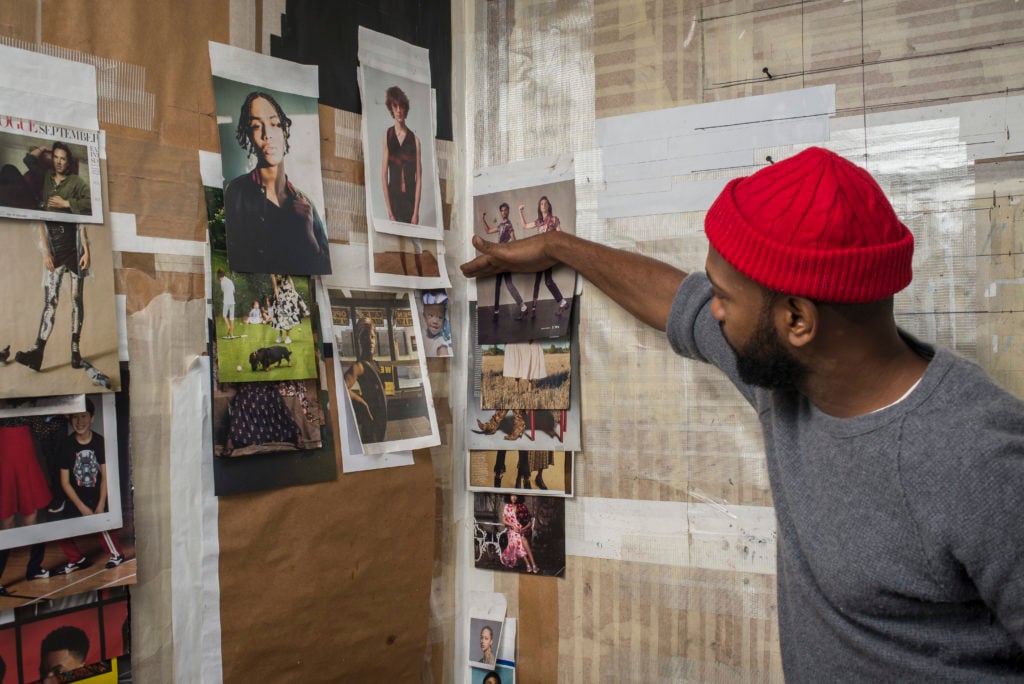
Nathaniel Mary Quinn demonstrating where the legs in his painting America’s Next Top Model (2018) were sourced. Photo: Taylor Dafoe.
You tend you keep your art and home life pretty close—you’ve long had studios in your homes and you work with your wife. Why is it important to you to keep those worlds so close?
Considering that I spend the majority of my life in the studio working, I find that it’s important for me to be as close as possible to my wife. It’s healthy for our marriage. My wife can come downstairs and see and speak with me whenever she feels like it. I didn’t want to be away from home, working until late at the night while my wife waits up. We take many walks together; our marriage is an everyday date. It’s also more economically sound to have my studio in the house that we own. It never made much sense to me to pay rent at two different locations, paying all of that money for something that doesn’t rightfully belong to me. Now, I pay a mortgage. I don’t have to worry about the landlord raising the rent on me. I feel like a real boss. I am a real boss, no doubt.
We’re planning on buying another house next year—a brownstone in Bedford-Stuyvesant where I’ll turn two floors into a bigger studio. My wife and I will rent out this house and live in the new one. These decisions of home ownership rest in the spirit of African-Americans during the 10-year era of Reconstruction following the American Civil War, where the primary aim of African-Americans was predicated on land and home ownership, which is easily understandable considering the nightmarish plight of this country’s origins: slavery. I choose to walk in the spirit of ownership. It’s about wealth building, legacy, and a sense of personal and community empowerment.
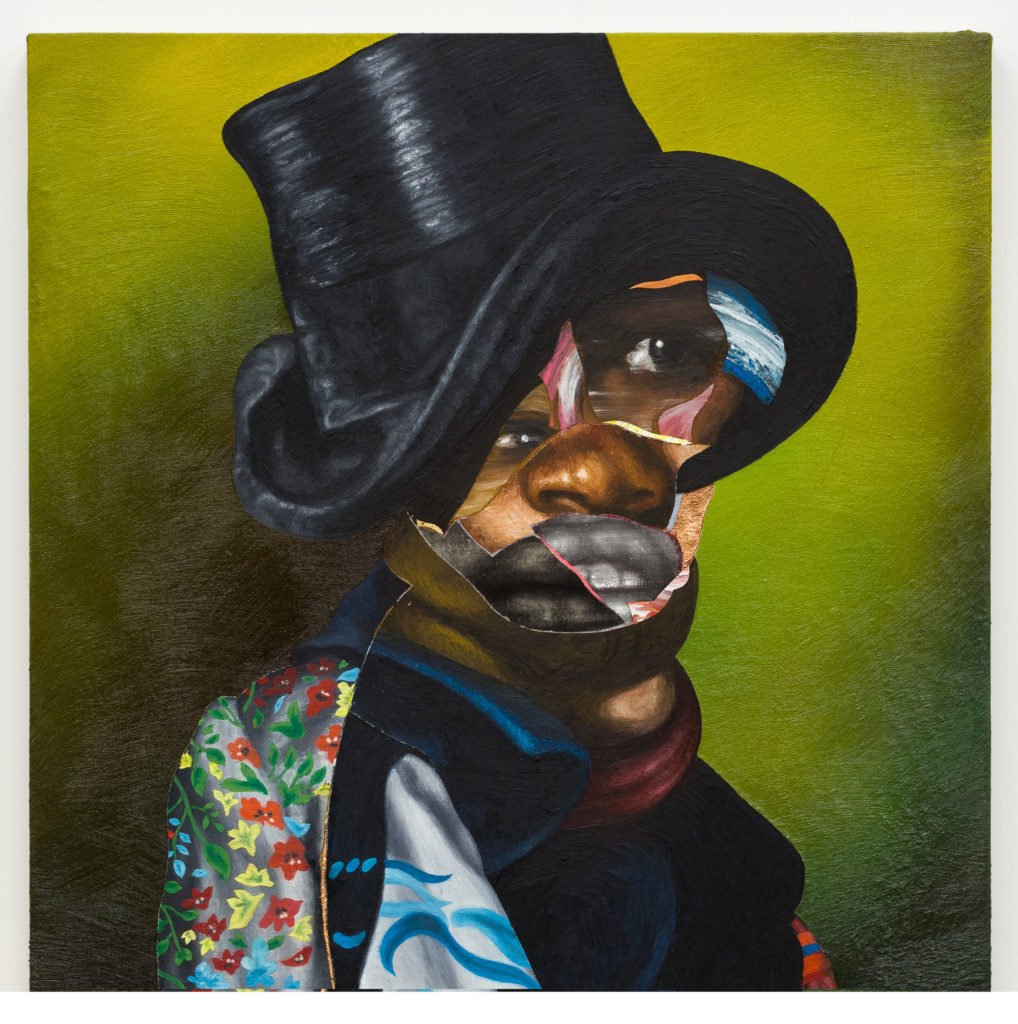
Nathaniel Mary Quinn, Homeboy Down the Block (2018). Courtesy of Salon 94.
You mentioned that you worked long hours in recent months trying to put the Salon 94 show together. When you’re in a period of heavy work like that, what’s your daily routine like?
During a period of heavy work, my daily routine is as follows: I wake up at around 7 a.m. I have a morning walk with my wife until 9 a.m. or so. I exercise, take a shower, make a cup of coffee, and meditate until around 10:30 or so. Then, I work from 10:30 a.m. until 3:00 p.m. I take a 15-minute break, then go back to work again from 3:15 to 8 p.m. Then another 15-minute break, then back to work until 1 a.m. or so.
Each day is divided into three phases of working; each phase consists of five-hour working blocks. Each phase is dedicated to particular sections of the work that must be completed. If by 1 a.m. all required sections in the work are not completed, then I continue working—going as late as 4 a.m. sometimes. There is no deviation during periods of heavy work and labor. This schedule is sustained seven days a week and repeated, like clockwork, each and every day. Sometimes adjustments are made—it’s quite rare though. I overcome exhaustion with a heavy consumption of water, prayer, and meditation, and an ongoing mantra that plays in my mind: “If it means that my mother could come back to life, would I do it?” The answer: yes. I do not make excuses. Sacrifices are made as easily as the blowing wind. A natural repulsion to mediocrity is embedded in my art practice. I work diligently because, someday, I hope to make a good work. It requires a lot of discipline and focus. For me, this is the path to greatness. Working off the whims of occasional inspirational moments produces results that will ultimately be unsatisfactory.
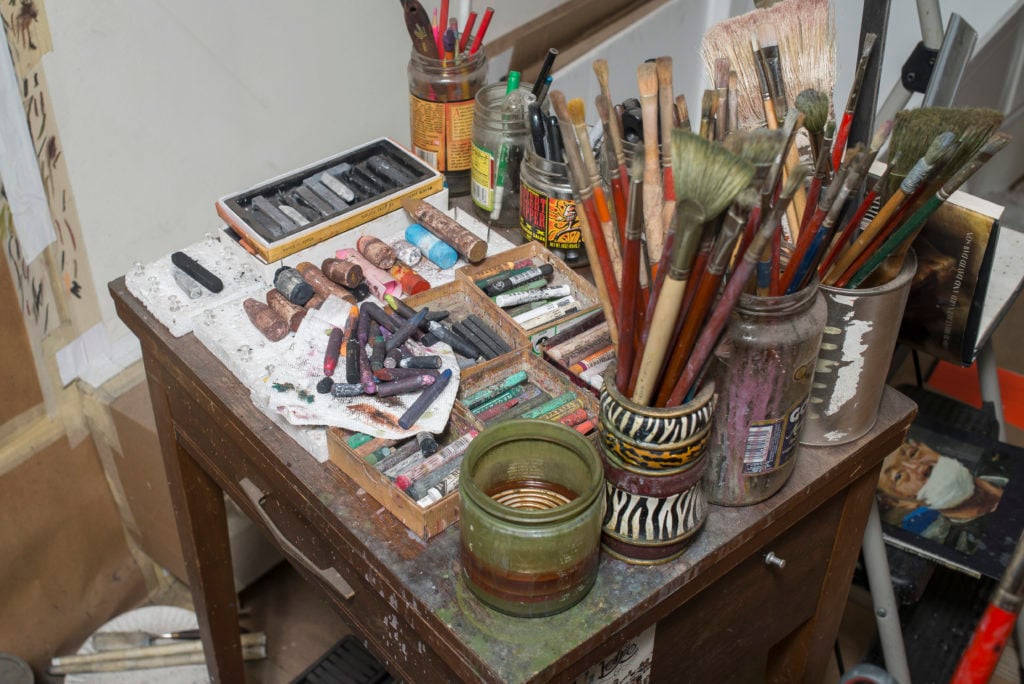
Photo: Taylor Dafoe.
What’s your worst studio habit?
My worst studio habit is being crippled by the fear of not being good enough to actually create a work. Thinking, “Am I talented enough to make this drawing or to make this painting?” Even after making so many works, after so much practice and so many hours of labor—after so many years—each work still produces in me the same fear and anxiety that accompanied the creation of the first work I made for my first solo exhibition in 2014 with Pace London, during the nascent stages of my career. It’s as though satan himself lives in my studio. He awaits my arrival every morning. He taunts me with jabs of doubt and fear. Upon picking up my materials, he begins his ominous rant: “You ain’t shit. Why do you continue to toil in pursuit of your own defeat?” Once I start painting or drawing, it’s as though he starts punching me: “Get that shit out of here, punk ass muthafucka!” Although I’m scared, petrified, captivated by fear, I keep fighting, keep working. Because I can’t lose this fight. By the end of the night, I reassure satan that I’ll be back tomorrow morning for another round, and I say, “I’m going to beat you again.” Satan replies, “I’ll be here, waiting.” Indeed, I have been burdened with glorious purpose.
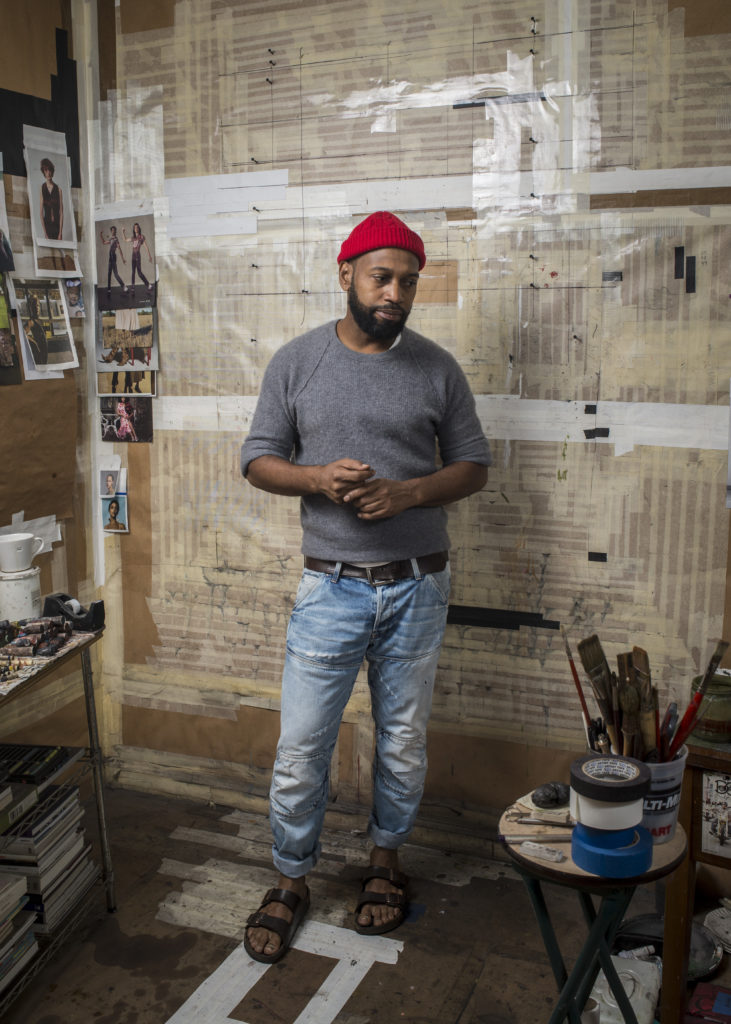
Nathaniel Mary Quinn in his studio. Photo: Taylor Dafoe.
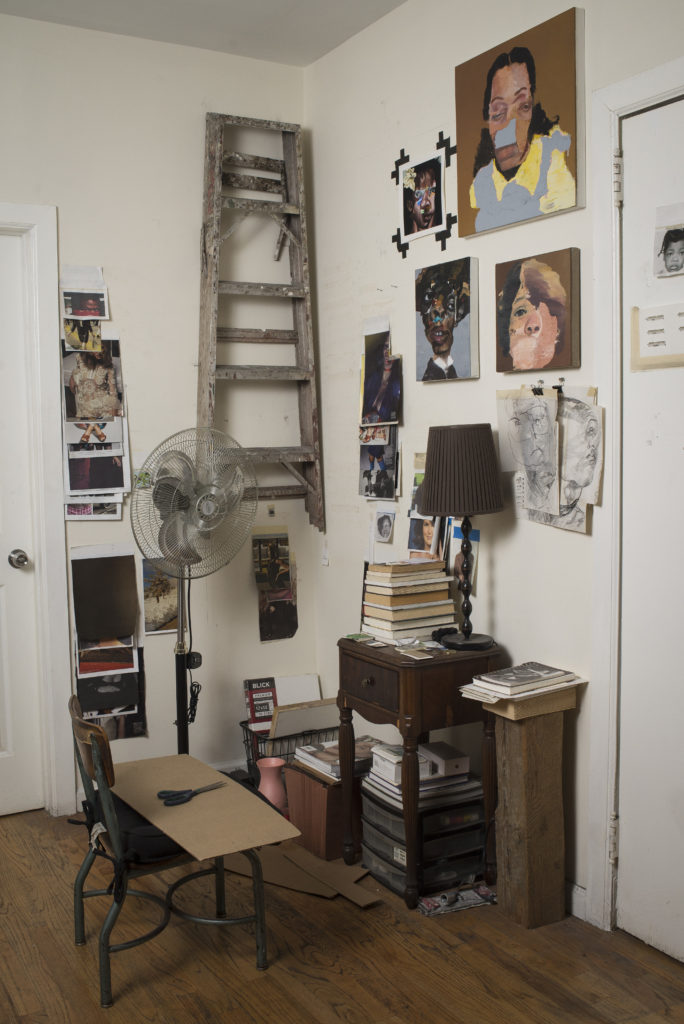
Photo: Taylor Dafoe.
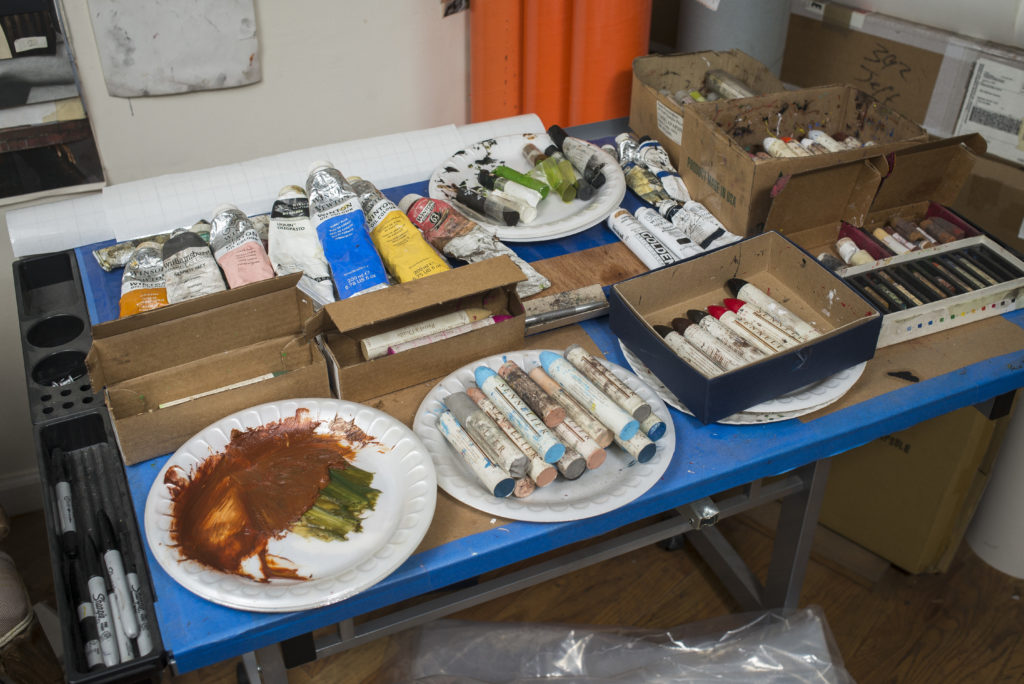
Photo: Taylor Dafoe.
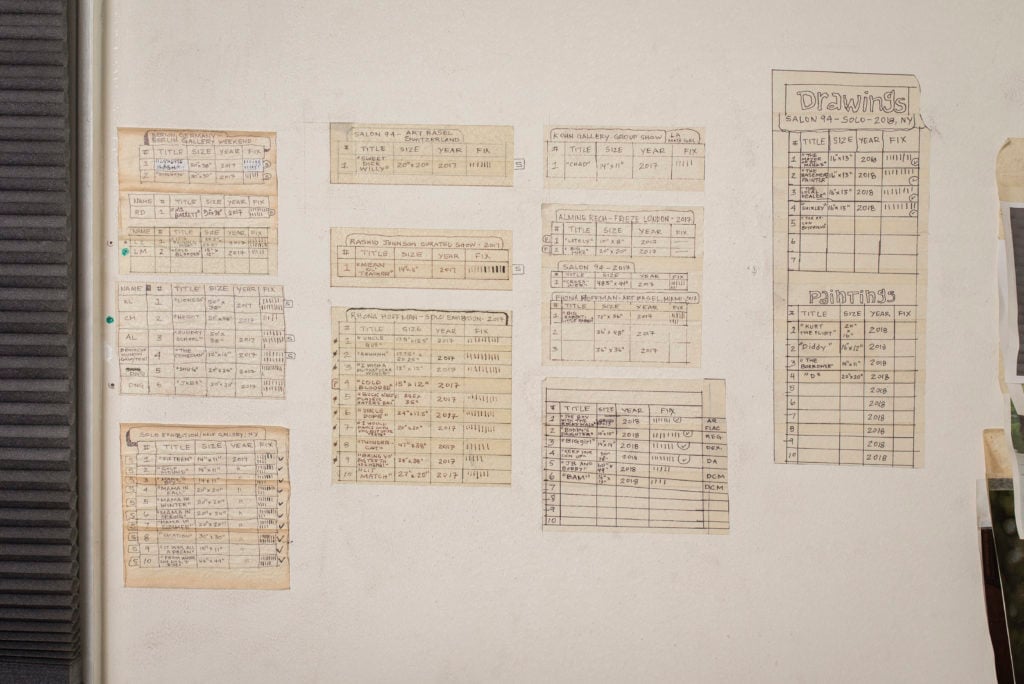
Photo: Taylor Dafoe.
“Nathaniel Mary Quinn: The Land” is on view at Salon 94 through October 27, 2018.